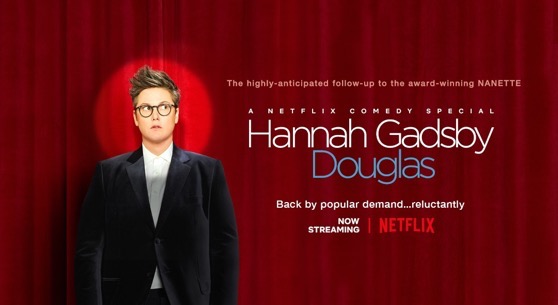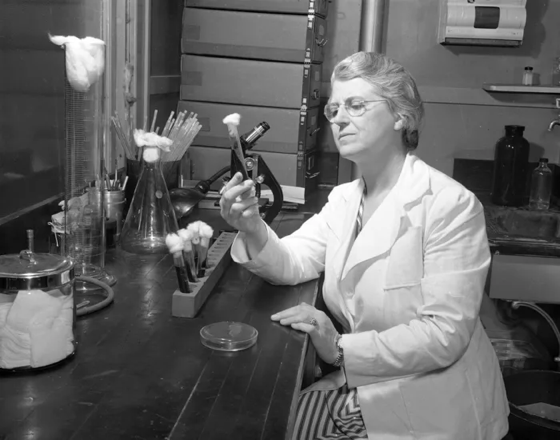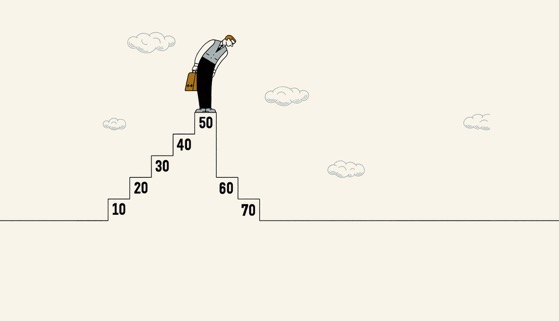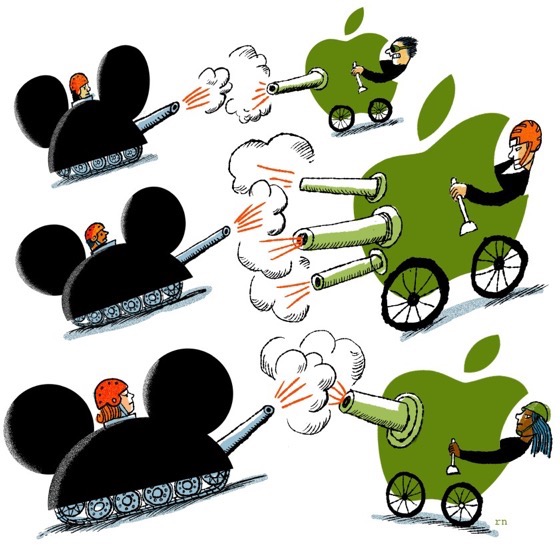At Netflix, character is often more important than plot, said the company’s creative talent director Christopher Mack at CineGouna Bridge, the industry section of Egypt’s El Gouna Film Festival, on Monday during his “Pitch Realization Masterclass by Netflix.” But it’s not about making him or her likeable, as their transformation is key to the storytelling experience.
“This change is driving people to watch our content. Your job is to make it interesting and engaging. Think about Walter White,” said Mack, explaining how to successfully pitch new concepts to Netflix. “Viewers develop a relationship with the characters, their engagement depends on whether they relate to them or not. Otherwise they won’t care.”
Category: News/opinion
With Hannah Gadsby’s new special “Douglas”!
If you have Netflix, watch Hannah Gadsby’s new special “Douglas” (that’s her dog’s name) for the writing, the laughter, the catharsis – and the Louis CK joke.
When I was a kid, the general idea was ‘women weren’t funny and/or powerful enough to dominate an audience’ or they could only be funny if they made fun of their looks (Phyllis Diller) – which is something Gadsby tackled in her first show, Nanette.
Words matter. Writing matters. Women writers matter.
“Name Screenwriters” says Dr. Rosanne Welch in Letter to Los Angeles Times
Because I believe that you can’t change things unless you challenge them, whenever I see a newspaper article about a film where the writer uses the director’s possessive (as in “Spielberg’s Lincoln) and never mention the writer (which in that case was Pulitzer Prize-winning Tony Kushner – Spielberg has never won a Pulitzer Prize), I try to write a letter to the editor explaining the mistake.
Often they print them. Once my letter appeared alongside a letter with a similar point, written by the author of one of our History of Screenwriting textbooks (who has come to speak to our students during Workshop – Tom Stempel).
This morning the LA Times published this letter. — Rosanne
To the editor: Your editorial elevated “compelling storytelling” as a quality that makes a movie great, but when listing examples of noteworthy films — “Lawrence of Arabia,” “The Shining” and “Vertigo” — you used the director’s possessive to identify the films, not once mentioning the writers (both novelists and screenwriters).
“Lawrence of Arabia” came to screens thanks to the book by T.E. Lawrence, which was adapted by screenwriters Robert Bolt and the blacklisted Michael Wilson. “The Shining” came from the mind of prolific novelist Stephen King, whose book was adapted by Stanley Kubrick and Diane Johnson, with Kubric directing. “Vertigo” is based on the novel “D’entre les morts” by Pierre Boileau and Thomas Narcejac, which was adapted by Alec Coppel and Samuel A. Taylor.
I’ve never understood why newspaper writers forget to name screenwriters when discussing movies. It seems an absurd example of internalized artistic oppression.
How can I be able to teach up-and-coming screenwriters their own value if journalists keep naming films as the property of the directors?
Rosanne Welch, Van Nuys
Why Don’t We Know Their Names? Whooping Cough Killed 6,000 Kids a Year Before These Ex-Teachers Created a Vaccine
Research for the book I’m in the middle of brought me to learn that the Whooping Cough was invented by two female former teachers.
Much as I love all Jonas Salk did for the world (and gave his patent away for free to help children), WHY wasn’t I ever taught about these women??? — Rosanne
Whooping Cough Killed 6,000 Kids a Year Before These Ex-Teachers Created a Vaccine
As the Great Depression raged, scientists Pearl Kendrick and Grace Eldering developed the first effective pertussis vaccine on a shoestring budget.
After a long day in the laboratory in 1932, Pearl Kendrick and Grace Eldering walked out into the chilly Michigan evening with specially prepared petri dishes, called cough plates, in tow. The two scientists were on a mission to collect bacteria in the wild: one by one, they visited families ravaged by whooping cough, the deadliest childhood disease of their time. By the dim light of kerosene lamps they asked sick children to cough onto each plate, dimpling the agar gel with tiny specks of the bacteria Bordetella pertussis.
Your Professional Decline Is Coming (Much) Sooner Than You Think via The Atlantic
Fascinating read about happiness as folks age out of their first careers…especially this point: “teaching is an ability that decays very late in life, a principal exception to the general pattern of professional decline over time. A study in The Journal of Higher Education showed that the oldest college professors in disciplines requiring a large store of fixed knowledge, specifically the humanities, tended to get evaluated most positively by students.” — Rosanne
Your Professional Decline Is Coming (Much) Sooner Than You Think
“It’s not true that no one needs you anymore.”
These words came from an elderly woman sitting behind me on a late-night flight from Los Angeles to Washington, D.C. The plane was dark and quiet. A man I assumed to be her husband murmured almost inaudibly in response, something to the effect of “I wish I was dead.”
Again, the woman: “Oh, stop saying that.”
I didn’t mean to eavesdrop, but couldn’t help it. I listened with morbid fascination, forming an image of the man in my head as they talked. I imagined someone who had worked hard all his life in relative obscurity, someone with unfulfilled dreams—perhaps of the degree he never attained, the career he never pursued, the company he never started.
At the end of the flight, as the lights switched on, I finally got a look at the desolate man. I was shocked. I recognized him—he was, and still is, world-famous. Then in his mid‑80s, he was beloved as a hero for his courage, patriotism, and accomplishments many decades ago.
In Memoriam: D.C. Fontana and How William Shatner’s Chest Inspired one (or more) Female Television Writers to Succeed in the Boys Club of Hollywood
In fond memory of D.C Fontana, who died yesterday at the age of 80, I am reposting this homage I wrote for the Mindful(l) Media podcast in 2015. She will be greatly missed. – Rosanne
As a child I didn’t come to Star Trek for the fantasy or for the fun futuristic optimism or even for the glory of the gadgetry of the tricorders and communicators. I came for William Shatner’s chest. Glimpsed quickly one day while changing channels, my pre-adolescent hormones screeched to a halt as I sat transfixed. That tight Star Fleet uniform shirt truly rippled across his chest, which seemed to strain to be released. We didn’t ‘flip’ in those pre-remote days. We sat in front of the set and manually spun the dial like the combination lock on our high school lockers, which brought us in to much closer contact with the (sometimes still black and white) pictures flashing upon our (compared to modern day frightfully small) screens. I don’t even remember which episode it was that first placed his pecs in front of me, but this obsession with Shatner’s chest focused me so much so that I never cared for the writers’ propensity for finding ways for his co-star to flaunt his own brand of sexuality. Forcing the unfeeling Mr. Spock to feel never moved me at all, so in second, third and fourth runs I never found “This Side of Paradise” much to my liking. In the epic mash up between Sexy Shatner and Sexy Spock, Shatner always won. But being a budding television writer even as a ten year old, I recognized in the idea the need to offer the actor a way out of the rigid character description enforced upon him by his creator.
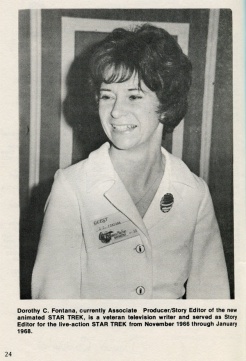 Viewed now from the perspective of a fifty-year old female television writer and scholar, no longer merely a fan, I find the episode fascinating for what it says about the history of women writers — and the female characters they create — in television. In those days of heady chest-worshipping I didn’t know that the D. C. in D. C. Fontana stood for Dorothy Catherine. When I later learned that information from reading The Making of Star Trek, I took her success as a beacon for my own journey, as did many other future female television writers I came to meet throughout my career. While countless books have been written about the influence of the program on science fiction and on television in general, what I came to learn was the influence Star Trek wielded on bringing women into the industry — and how their participation changes the way female characters are portrayed.
Viewed now from the perspective of a fifty-year old female television writer and scholar, no longer merely a fan, I find the episode fascinating for what it says about the history of women writers — and the female characters they create — in television. In those days of heady chest-worshipping I didn’t know that the D. C. in D. C. Fontana stood for Dorothy Catherine. When I later learned that information from reading The Making of Star Trek, I took her success as a beacon for my own journey, as did many other future female television writers I came to meet throughout my career. While countless books have been written about the influence of the program on science fiction and on television in general, what I came to learn was the influence Star Trek wielded on bringing women into the industry — and how their participation changes the way female characters are portrayed.
Because of Fontana, future writers of future Trek franchises invited other female writers to pitch ideas so that, to my great joy twenty years after I stumbled upon the original Trek, I found myself in the offices of Star Trek: The Next Generation pitching ideas for stories involving what was still largely a boys club of characters. Sure, they had accepted two women into their continuing cast — both in ‘soft’ occupations as ship’s counselor and medical doctor and still under the command of Captain Picard. But the franchise had proved a stepping stone for a variety of female writers I admired (including Jane Espenson and Melinda M. Snodgrass) and I was excited to be among them. I never sold a story to that iteration of the show, but I kept watching — and kept noticing — that written by women, female characters were (and sadly are still) often more developed (in ways other than their chest measurements).
In “Paradise” that is true of what actress Nichelle Nichols is given to do as our cast regular female, Lt. Nyota Uhura (whose first name I never knew until the writing of this essay) and what Jill Ireland is given to do as the guest character, Spock’s former girlfriend, Leila (who in the tradition of sex objects was never provided a last name). Normally confined to dialogue discussing ‘hailing frequencies’ and only seen taking orders from Captain Kirk, in “Paradise” Uhura commits mutiny against her captain. He has to state for the Captain’s log that, “Lt. Uhura has effectively sabotaged all communications.” While all the male starship members also commit mutiny, Uhura is given one-on-one screen time with the lead actor to do so. Likewise, while Leila seems at first to only be demonstrating that the most perfect, porcelain-faced blonde can even be sexy in overalls, she was also spouting Thoreau (as in Henry David) and his brand of 19th century Transcendentalist philosophy to Spock — and to the audience. For a show airing at the height of the hippie movement, Leila served as a mouthpiece for their dream of peaceful co-existence, one not yet shared by other generations. In several online interviews Fontana has chosen Leila as one of her favorite characters, so we know much of what Leila says comes from Fontana’s own philosophies.
Of course, in the end television was then (and still is now) a man’s world so Uhura’s and Leila’s interests are eventually subsumed by Kirk’s desire to prove, “Man stagnates if he has no ambition, no desire to be more than he is.” This philosophy discounts ‘woman’ as part of ‘man’ and makes the female-gendered idea of creating peace and happiness submissive to the more male dominant idea of success defined by changing the world around him. Why is a love of nature, as evidenced in Spock’s line: “I have seen a dragon… but I’ve never stopped to look at clouds before, or rainbows” less of an ambition for man? Even the American Founding Fathers cared more for the land and its beauty than these final frontier founders seem to do as they travel the galaxy. Why is the existence of this previous girlfriend and the chance to hear “I love you” from a formerly feeling-less alien male, less of an ambition of (wo)man?
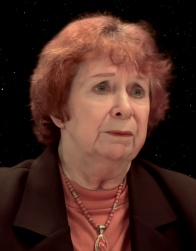 Despite her straining to include her voice in this world, the male producer(s) still stamped their voice on the final product that became “This Side of Paradise”. Over the course of my career, I came to learn that Fontana shared that experience with many of the female writers who followed her, each one planting just enough seeds or dropping just enough breadcrumbs of her own opinion onto the fields of male creation for the rest of us ‘chick writers’ to follow. Where as a child I saw “This Side of Paradise” as an epic battle between sexy male leads, as an adult I see it as the continued battle for the hearts and minds of the audience waged by writers of different genders. It is a fight that several other sisters have carried on through the decades and one I’m willing to declare has been won by a relative newcomer to the scene, Shonda Rhimes. Through the creation of her own new frontier in Grey’s Anatomy, Rhimes provides male and female audiences alike with an all-inclusive world entirely conceived in a female mind. What do both the male and female doctors of Seattle Grace Hospital hope to provide their patients everyday? As Rodenberry provided a masculine ‘trek’ for man into the final frontier, the feminine goal Rhimes provides her characters is right there in the title of the hospital, ‘grace’. (And thanks to D. C. Fontana, Shonda chose to use her first name in her credits.)
Despite her straining to include her voice in this world, the male producer(s) still stamped their voice on the final product that became “This Side of Paradise”. Over the course of my career, I came to learn that Fontana shared that experience with many of the female writers who followed her, each one planting just enough seeds or dropping just enough breadcrumbs of her own opinion onto the fields of male creation for the rest of us ‘chick writers’ to follow. Where as a child I saw “This Side of Paradise” as an epic battle between sexy male leads, as an adult I see it as the continued battle for the hearts and minds of the audience waged by writers of different genders. It is a fight that several other sisters have carried on through the decades and one I’m willing to declare has been won by a relative newcomer to the scene, Shonda Rhimes. Through the creation of her own new frontier in Grey’s Anatomy, Rhimes provides male and female audiences alike with an all-inclusive world entirely conceived in a female mind. What do both the male and female doctors of Seattle Grace Hospital hope to provide their patients everyday? As Rodenberry provided a masculine ‘trek’ for man into the final frontier, the feminine goal Rhimes provides her characters is right there in the title of the hospital, ‘grace’. (And thanks to D. C. Fontana, Shonda chose to use her first name in her credits.)
All this musing makes me wonder how many young female writers are now coming to their careers because of a love of the way Patrick Dempsey’s chest ripples under his uniform shirt?
Screenwriters (once again) left out of Los Angeles Times Maleficent Story!
This is definitely driving me crazy!
After reading the attached article I had to write this letter to the Los Angeles Times:
Did Tracy Brown really write a whole article (“How Angelina Jolie’s daughter inspired the secret backstory of ‘Maleficent: Mistress of Evil’”) about the story process for the new Maleficent sequel WITHOUT ONCE mentioning the name of the credited screenwriters – Linda Woolverton (who also wrote the original film) and Noah Harpster?
The article even begins with naming the director in the first sentence. This is a ludicrous example of the unexplained contempt journalists (who are writers themselves) seem to have against screenwriters – or solid evidence that the now disproved-in-academia-but-still-mistakenly-believed-by-others auteur theory still holds sway. But directors do not write their films unless you call them ‘writer-directors’.
Read the entire article – “How Angelina Jolie’s daughter inspired the secret backstory of ‘Maleficent: Mistress of Evil’”
Comments On Who Will Win The Streaming Wars?
How many streaming services will you subscribe to before streaming costs as much as that cable cord so many of us have cut?
I predict Netflix will survive based on being early to the game and how they have struck so many co-production deals in major countries all over the world so they are seeding their service with material to please a greater audience.
Yes Disney+ will do well but in my family we cut cable when my son outgrew the Disney Channel – which happens in all families eventually so I don’t think even the core of lifelong Disney fans will be enough to make the service necessary forever. Yes, they have the Marvel and Star Wars worlds now, but I own the films in those franchises already… so subscribing brings me nothing new…But we’ll see, won’t we? — Rosanne
Who will win the streaming wars?
An epic battle is brewing in the entertainment industry. In the coming months, most of the biggest media conglomerates will launch their own streaming services in a high-stakes effort to remain relevant by selling movies, TV programming and short-form videos directly to viewers.
While the much-anticipated slugfest between the Walt Disney Co. and Netflix Inc. is sure to garner the most attention, AT&T Inc.’s HBO Max and Comcast Corp.’s Peacock also are getting ready to enter the fray, as are Apple Inc.’s Apple TV+ and Jeffrey Katzenberg and Meg Whitman’s Quibi.
The competition for subscription and advertising dollars has already led to disruption and anxiety. Studios are spending heavily to lock up prolific showrunners and popular older shows that they hope will get viewers to subscribe. Recently, tensions flared as Disney began rejecting Netflix ads on its TV channels.
Dr. Rosanne Welch Named As The New Executive Director Of Stephens College MFA In TV And Screenwriting Program
From Stephens College Office of Academic Affairs…
I am pleased to share with you the following announcement about an exciting change of leadership for the Stephens College MFA in TV and Screenwriting program. Congratulations to the team and thank you for all of your hard work building an amazing program.
– Dr. Leslie Willey, Stephens College Vice President for Academic Affairs
 The Stephens College MFA in TV and Screenwriting established in 2014, has named Dr. Rosanne Welch as the new executive director. Program founder and former director Ken LaZebnik will serve as Writer-in-Residence, while Khanisha Foster ’17, a graduate of the M.F.A. program, will serve as associate director. The program also features 15 faculty mentors and a rotating group of guest lecturers, all working writers, members of the Writers Guild and successful industry professionals.
The Stephens College MFA in TV and Screenwriting established in 2014, has named Dr. Rosanne Welch as the new executive director. Program founder and former director Ken LaZebnik will serve as Writer-in-Residence, while Khanisha Foster ’17, a graduate of the M.F.A. program, will serve as associate director. The program also features 15 faculty mentors and a rotating group of guest lecturers, all working writers, members of the Writers Guild and successful industry professionals.
Welch has served as a faculty member in the M.F.A. program since its start, creating a set of courses around the history of screenwriting, and teaching courses in one-hour drama. Her television writing credits include “Beverly Hills 90210,” “Picket Fences,” “ABC News: Nightline” and “Touched by an Angel.”
She edited “When Women Wrote Hollywood,” a book of essays published in 2018 that was named runner-up for the Susan Koppelman Award honoring the best anthology, multi-authored or edited book in feminist studies by the Popular Culture Association. She co-edited “Women in American History: A Social, Political, and Cultural Encyclopedia,” which was named to both the 2018 Outstanding References Sources List and the list of Best Historical Materials by the American Library Association, and authored “Why the Monkees Matter: Teenagers, Television and American Popular Culture.”
Welch serves as book reviews editor for the Journal of Screenwriting and on the editorial board for Written By magazine. She was elected to the executive committee of the International Screenwriting Research Network this year for a two-year term.
Video games following path of films in their marketing and “Death Stranding” Game Trailer
What’s interesting about this video game trailer (is first of all that they have trailers for video games!) but that at the 5:36 mark they begin giving the credits for all the relatively big name actors in this – including Guillermo del Toro and (for me) Lindsay Wagner (the original Bionic Woman) which shows how this new-ish art form is following the path of films – which originally did not name their actors until they realized actors bring in audience.
Also, that the branding of the creator “Kojima Productions”. The parallels between these arts-turned-businesses are so interesting. — Rosanne
** Notes originally from discussion with Stephens College MFA in TV and Screenwriting students
Follow and Like the Stephens College MFA in TV and Screenwriting Facebook Page

